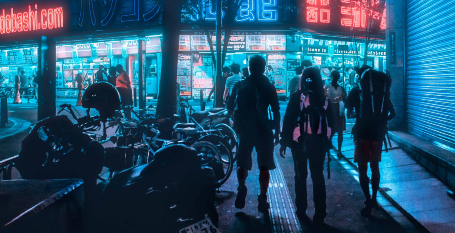What’s life like for LGBTQ people in Japan? Let’s take a look at some of the key equality measures.
Is homosexuality legal in Japan?
Yes. Same-sex sexual activity has never really been addressed by Japan’s penal code.
Are there anti-discrimination protections in place for LGBTQ people in Japan?
Yes. Major cities have anti-discrimination provisions that protect against discrimination on the grounds of sexuality, but there’s not a comprehensive national framework.
Is there Marriage Equality in Japan?
No. Some city-level authorities have introduced partnership certificates which extend some legal recognition to same-sex relationships.
Japan’s constitution and civil code explicitly restrict marriage to opposite sex couples.
What’s life like for LGBTQ people in Japan?
While Japan can seem ultra-modern, underpinning Japan’s culture is a socially conservative and traditional view of the world.
Generally, Japan is fairly welcoming and accepting of LGBTQ people.
In larger cities, there is a visible LGBTQ community.
What’s the history of homosexuality in Japan?
Homosexuality and same-sex relations have been documented in Japan since ancient times.
In the pre-Meiji period, relationships inside Buddhist monasteries were typically pederastic. The older partner (the nenja) would be a monk, priest or abbot, while the younger partner (the chigo) would be an acolyte – an adolescent boy. The relationship would be dissolved once the boy reached adulthood or left the monastery. Both parties were encouraged to treat the relationship seriously and conduct the affair honourably, and the nenja might be required to write a formal vow of fidelity.
During the Tokugawa period, some of the Shinto gods – especially Hachiman, Myoshin, Shinmei, and Tenjin – came to be seen as guardian deities of nanshoku (male–male love).
Same-sex sexual activity was also common among the samurai – the warrior class. Among the samurai, it was customary for a boy in the wakashū age category to undergo training in the martial arts by apprenticing to a more experienced adult man. The relationship was based on the typical nenja, who loves, and the typically younger chigo, who is loved. The man was permitted, if the boy agreed, to take the boy as his lover until he came of age. These relationships were expected to be exclusive, with both partners swearing to take no other lovers.
Miyamoto Musashi – a legendary swordsman of the samurai era – is one of the most famous practitioners of the same-sex warrior lover tradition.
As Japan progressed into the Meiji era, same-sex practices continued. However, there was a growing animosity towards these practices. The practice of nanshoku began to die out after the Russo-Japanese War. Opposition to homosexuality did not become firmly established in Japan until the 19th and 20th centuries, through the Westernisation efforts of the Empire of Japan.
Visiting Japan
Japan is a fascinating country that is surprisingly easy to visit and navigate your way around – even if you don’t speak or read Japanese.
While at first, the size and pace of Japanese cities can feel a bit overwhelmingly frenetic, if you stay calm and think things through, you’ll find that most things have helpful signage in English, an English translation option, or are relatively straightforward to understand.
The Japanese people are also generally very helpful and keen to assist if you’re not sure where you’re supposed to be going or what you’re supposed to be doing.
Japan is a surprisingly diverse country, and there’s huge range of things to immerse yourself and experience. The big cities are the obvious starting point, but you’ll still only be scratching the surface. Here’s a quick guide to assist with your planning:
Kyoto
Kyoto is the ancient capital of Japan, and it’s where you’ll find a number of must-see temples. But today, Kyoto is also a vibrant and modern city. Worth spending a few days here to explore.
Nara
Nara is an easy 30-minute train ride from Kyoto. Nara used to be the capital of Japan before Kyoto (and then it moved to Tokyo).Nara has quite a lot of temples and is famous for two main things — there’s a lot of deer roaming the park and all the temple grounds (they’re pretty tame and love being fed by tourists); and there’s also a big statue of Buddha in one of the temples. A good day trip option while you’re visiting Kyoto, but not essential if you’re pressed for time.
Osaka
You’ll probably be arriving into Osaka by train — either from the Kansai airport or by Shinkansen bullet train from Tokyo or Kyoto.
Things to do:
Grab some lunch on Doutonburi street — enjoy a feast of Takoyaki (the octopus balls) and Okonomiyaki (the cabbage pancake).
Stay in a capsule hotel and enjoy the traditional bathing facilities — a seated showering area where you wash, then a couple of different hot tubs for relaxing, and a sauna for steaming.
Hit the streets of Shinsaibashi, the night-life hub of the city. Awash with pimps, prostitutes, and late-night shopping. Lots of good bars and restaurants to choose from.
Tokyo
Tokyo is a surprisingly liveable city that is worth spending some time in to get your bearings and explore the different neighbourhoods.
Use the metro system to get around town – it’s easy to navigate and the most efficient way to travel.












 列印版本
列印版本




















讀者回應
搶先發表第一個回應吧!
請先登入再使用此功能。